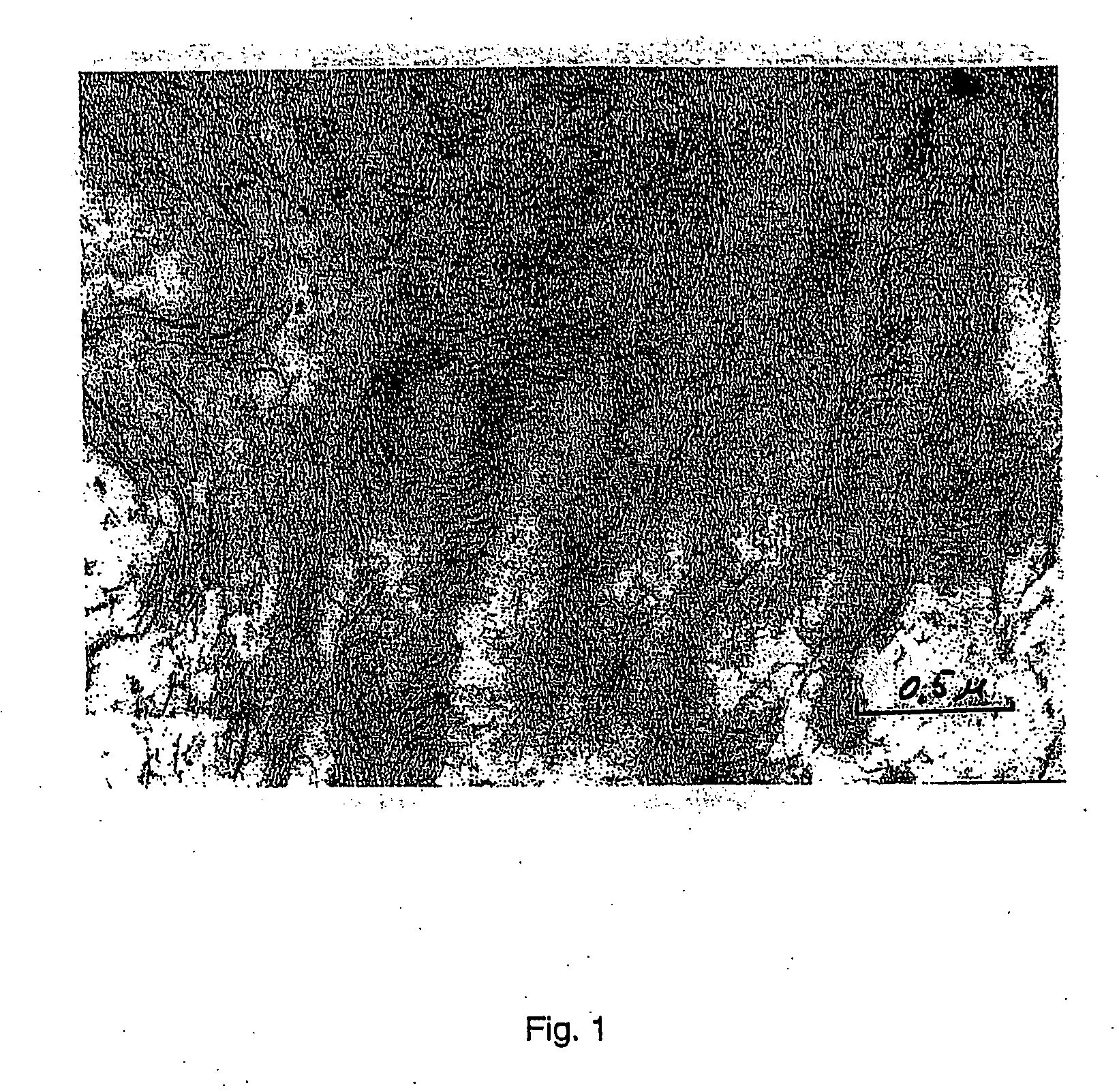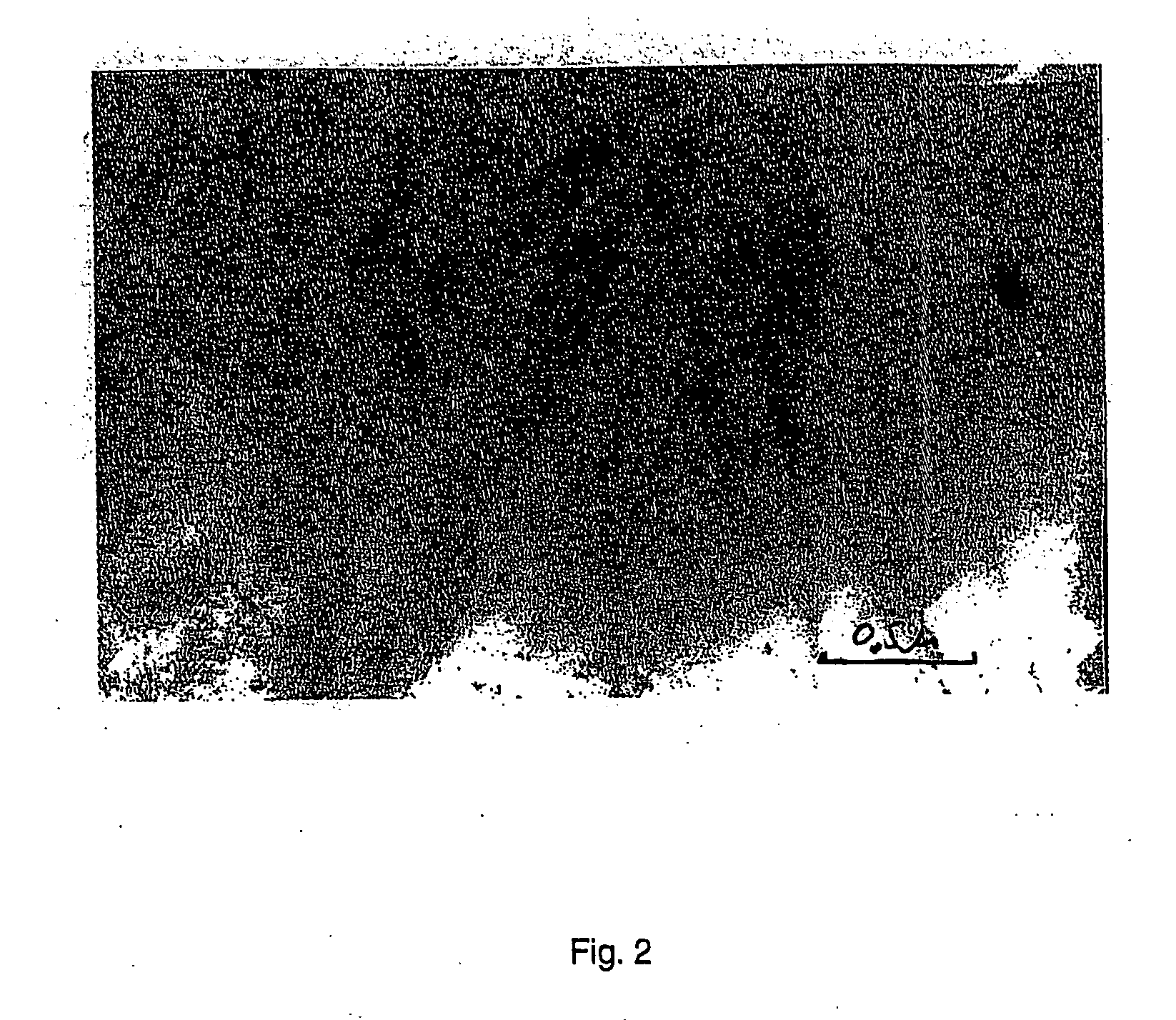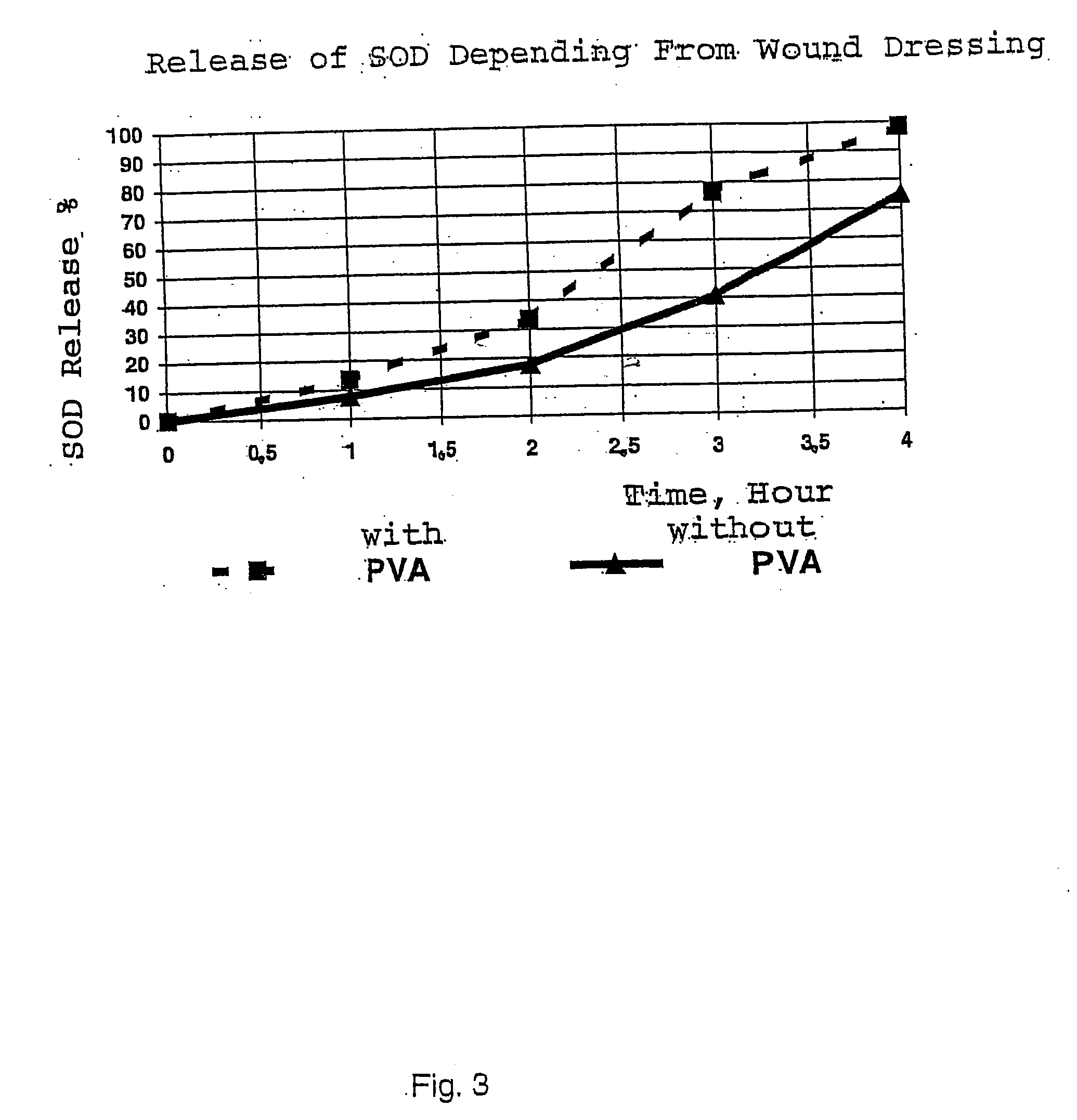Therapeutically active dressings, their manufacture and use
a technology of active dressings and dressings, applied in the field of therapeutically active dressings, their manufacture and use, can solve the problems of insufficient effectiveness, pain in the first healing phase, and difficult for patients to bear,
- Summary
- Abstract
- Description
- Claims
- Application Information
AI Technical Summary
Benefits of technology
Problems solved by technology
Method used
Image
Examples
example 1
[0084] 3 g lyophilized collagen was added to 150 ml of an aqueous solution of 1% glutaminic acid and 1% malic acid. At the same time, 3 g chitosan was dissolved in 150 ml 1% succinic acid. The two solutions were mixed and dialyzed against water over the course of 20 hours until a pH of 5.2 was obtained. 0.04 g SOD, 0.03 g catalase and 0.06 ml 20% chlorhexidine bigluconate solution and 20 ml 3% arginine solution were added to this solution. Then 5 ml 1.25% glutaraldehyde solution was added and finally the resultant gel was freeze-dried.
[0085] The wound dressing in accordance with RU 8608 B, 1998 was prepared at the same time:
[0086] 3 g lyophilized collagen was dissolved in 150 ml 3N acetic acid. 3 g chitosan was dissolved in 150 ml 2% acetic acid.
[0087] The two solutions were mixed and dialyzed over the course of 20 hours against water to a pH of 5.2.
[0088] 0.04 g SOD and 0.06 ml 20% chlorhexidine bigluconate solution and 20 ml 3% arginine solution were added to this solution. Th...
example 2
[0092] Example 2 shows the effect of composition and concentration of polycarbonic acids and amino acids on the properties of wound dressings. Table 1 shows how the wound dressings are prepared.
TABLE 3Effect of manufacturing conditions on wound dressing propertiesChitosan / PropertiesCarbonic acidAmino acidPCA- ratio inPCA / AA-ratio inBrittelnessNo(PCA)(AA)starting solutionwound dressingWaste %(hardness)Porosity1Succinic acidGlycine1:81:0.85100 highlarge(8.5%)2Succinic acidGlycine1:41:1.8highlarge(7.3%)3Succinic acidGlycine1:21:3.3lowlarge(7.3%)4Glutaminic acidGlycine1:21:3.317 lowmedium(7.3%)5Malonic acidGlycine1:21:3.36 lowlarge(7.3%)6GASGlycine1:21:7.5100 highlarge (15%)7GASGlycine1:21:3.30 lowlarge(7.2%)8GASGlycine1:21:1.5lowmedium(3.2%)9GASGlycine1:21:0.9>70% highnone(2.0%)10Succinic acidGlycine1:11:6lowlarge(7.2%)11Succinic acidGlutamin1:11:6lowlarge(7.2%)12Succinic acidAlanine1:11:6lowlarge(6.6%)13Succinic acidGlycine1:0.51:15lowmedium (15%)14Succinic acidGlycine1:11:3.6 0%...
example 3
[0094] 3 g lyophilized collagen was added to 150 ml of a solution of 2% succinic acid. At the same time, 3 g chitosan was dissolved in 150 ml 1% succinic acid. The two solutions were mixed and dialyzed against water over 20 hours until a pH of 5.2 was obtained. 0.04 g SOD or 0.03 g catalase and 20 ml 2% proline solution were added to this solution.
[0095] The resultant solution was divided into two equal parts. 2.5 ml 1.25% glutaraldehyde solution was added to one part. 0.3 g polyvinylalcohol in 20 ml water was added to the other part. Then 2.5 ml 1.25% glutaraldehyde solution was added. The resultant materials were frozen at −35° C. and freeze-dried. SOD in a concentration of 0.6% of the dry weight or 0.1 mg per cm2 was detected in the prepared wound dressings. The specific density was 0.014+ / −0.001 g per cm3. The water adsorption capacity was 7100+ / −500%. The wound dressings containing polyvinyl alcohol had uniform and somewhat smaller pores. The elimination of SOD was determined ...
PUM
| Property | Measurement | Unit |
|---|---|---|
| molecular weight | aaaaa | aaaaa |
| molecular weight | aaaaa | aaaaa |
| molecular mass | aaaaa | aaaaa |
Abstract
Description
Claims
Application Information
 Login to View More
Login to View More - R&D
- Intellectual Property
- Life Sciences
- Materials
- Tech Scout
- Unparalleled Data Quality
- Higher Quality Content
- 60% Fewer Hallucinations
Browse by: Latest US Patents, China's latest patents, Technical Efficacy Thesaurus, Application Domain, Technology Topic, Popular Technical Reports.
© 2025 PatSnap. All rights reserved.Legal|Privacy policy|Modern Slavery Act Transparency Statement|Sitemap|About US| Contact US: help@patsnap.com



